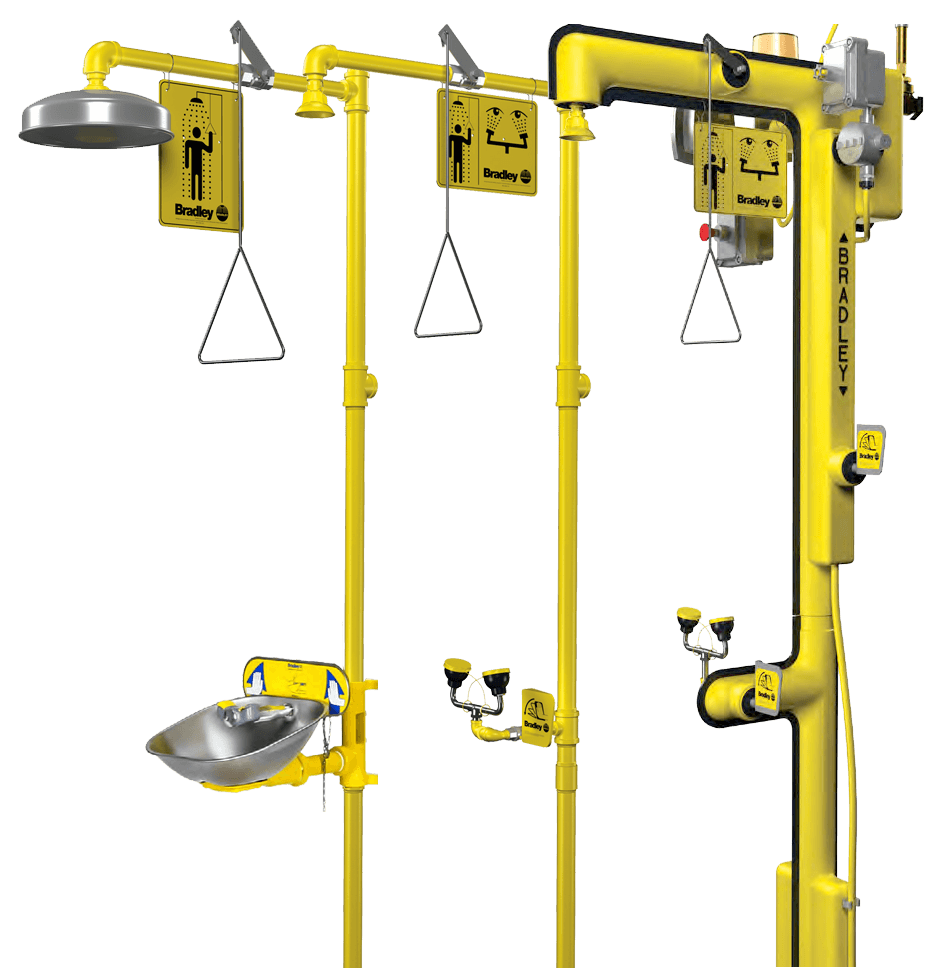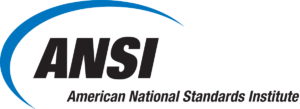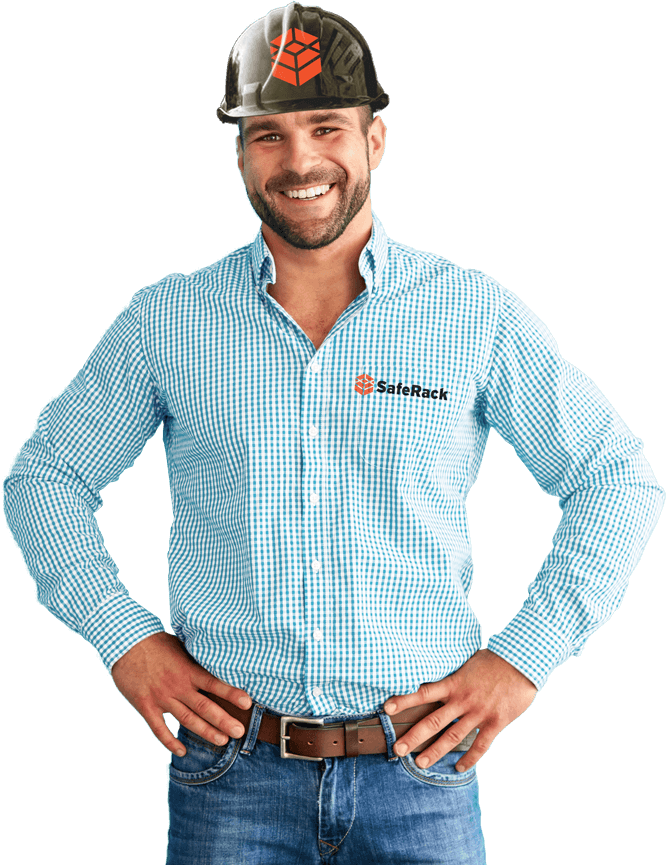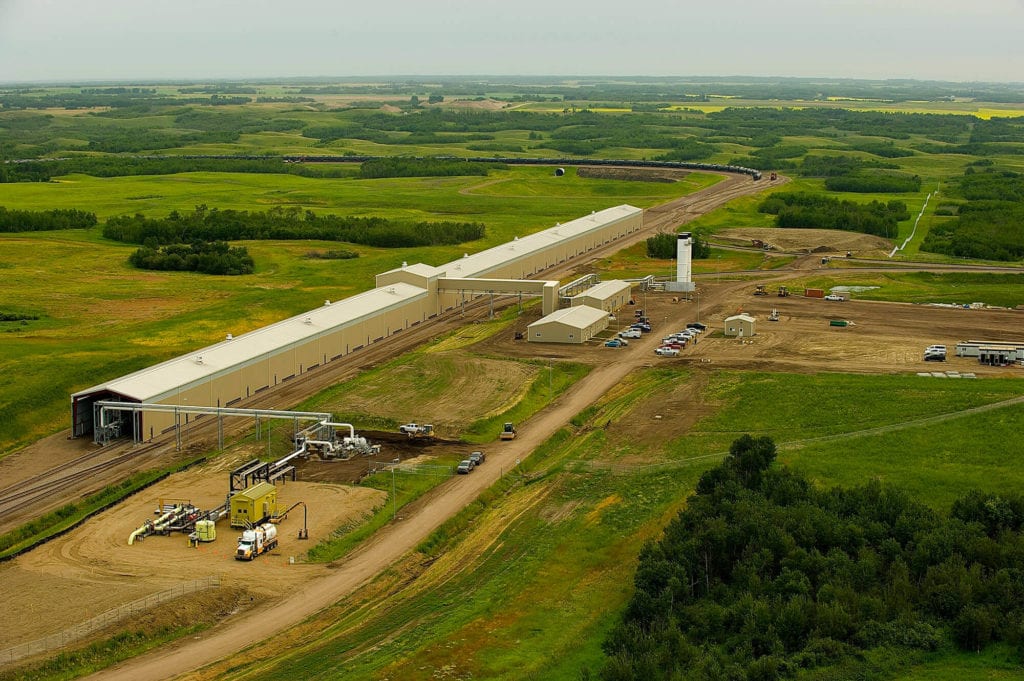Get a quote, configure a custom safety solution or ask a question. We're here to help!
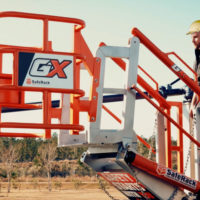
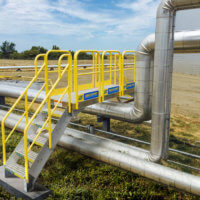
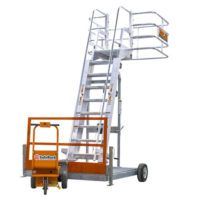
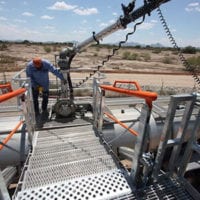
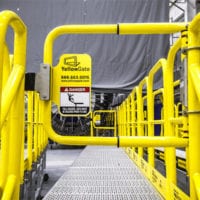
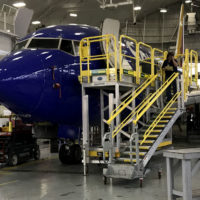
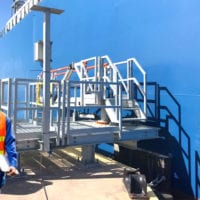

- Spill ContainmentMore …Loading Safety CagesMore …
SafeRack Worldwide
We pride ourselves on one-on-one customer service. When you call SafeRack, we'll be there to answer your questions with a combined experience of 400+ years.
Select your region below.- View Products
- Railcar & Truck Loading Platforms
- Gangways & Loading Ramps
- Stairs, Platforms & Ladders
- Mobile Ladders & Platforms
- Loading Arms & Fluid Transfer
- Safety Gates & Traffic Control
- Aviation & Aerospace Access
- Marine Access & Loading
- Grounding & Monitoring
- Spill Containment
- Loading Safety Cages
- Transloaders & Skids
- Shelters & Canopies
- Fall Protection
- Terminal & Speciality
Home / Industries / Bulk Chemical Loading / Ethyl Chloride (CH3CH2CI) Handling Design, Loading & InstallationEthyl Chloride (CH3CH2CI) Handling Design, Loading & Installation
Any ethyl chloride loading solution must take into consideration critical design criteria to optimize safety and increase productivity at your facility.
Ethyl chloride or chloroethane is a man-made chemical compound that was once widely used in producing tetraethyl lead, a gasoline additive. More recently, it has been used as a medical ingredient to control pain, and for the temporary relief of minor sports injuries.
When topically applied to the skin, ethyl chloride creates an instantaneous numbing and cooling effect on the skin surface thereby producing a temporary anesthetic effect.
Ethyl chloride is typically shipped in DOT-111A and 112A insulated tank cars with safety valves that meet the DOT specification for the transportation of ethyl chloride and other similar commodities. The rails cars are usually ~ 9′ outside diameter with an overall length of ~45’ to 60′, with a 6’ x 6’ center opening or off-set opening crash box.
All trailers must be equipped with pressure relief valves, and trailers with bottom outlets must be outfitted with remote-controlled stop valves. Tank truck loading and unloading procedures are similar to railcar applications with the trailers meeting established DOT requirements for hauling titanium ethyl chloride. Approved DOT trailers include MC 300 thru MC 312, MC 330, and MC 331 and must be equipped with remote-controlled stop valves.




























Question, Get a Quote, Live Demo or Request an On-Site Visit
Our experts simplify the complex
View Full TextIn the United States, ethyl chloride is typically a “tight-fill” (closed-loop) loading operation and is loaded into rail cars via chemical hoses or 3” stainless steel loading arms. If not handled properly, ethyl chloride can cause serious injuries and personal protective equipment (PPE) is highly recommended. Additionally, because operators are on top of the vehicles during the loading process, high-quality fall prevention is essential, to increase throughput and ensure operator safety at all times.
Trailers are typically unloaded from the top with an extension pipe with two valves flanged to the top of the trailer. One valve is located at the top, and the other is at the end of the pipe on the bottom for easy access. Trailers should arrive on-site with blind flanges.
Your Project
Before we begin your project we will need to know the following:
- Railcar connection locations require flexibility. Do you know what the breadbasket connections look like?
- Are you using liquid and vapor arms/hose as two separate devices or a piggyback arm?
- Is the loading station located indoors or outside?
- Is the loading area temperature controlled?
- How will you spot your railcars?
Our highly trained technical team will conduct a thorough site survey prior to gather all dimensions, obstructions, and access issues prior to the start of your project. Our goal is to provide the safest working environment while protecting operators and the equipment and enabling your business to improve throughput and productivity.
We’re Here for You
Whether you are looking for a turn-key installation, on-site supervision, or a maintenance program, we’re well-positioned to assist you. Ready to do as little or as much as you require, our project management and supervision team is the best in the business.
- Collaborative Design – Our loading platform specialists will work with you one-on-one to design the best loading solution for your facility.
- Contract review – We will provide all technical drawings and associated documents relating to the contract prior to site arrival.
- Risk Assessment – We will conduct a thorough site risk assessment.
- Shipment Inspection – Our team will inspect the product for detection of any shipping damage or abnormalities.
- Material Receiving – Off-loading and transport can be supervised by our team on-site as required.
- Installation Management – We are prepared to coordinate and supervise all installations.
- Start-up & Commissioning – We will provide on-site training for both users and maintenance personnel as needed.
Loading Arms
Generally speaking, we recommend rigid pipe loading arms wherever possible for the following reasons:
- Balanced throughout their movement envelope
- Designed not to hit the ground – protecting the asset and the operator
- Ergonomic – one person operation
- Fitted with manual or actuated valves
- Fitted with optional purge/vent facilities
- Can be moved into position with ease and left hanging in the air while the operator prepares the tanker connection
- Can be parked neatly
Alternatively, we do not generally recommend hoses as they require:
- Annual pressure test
- Are difficult to stow neatly when not in use
- Can be dropped or driven over
- Are very heavy to use if fitted with a valve at the tanker connection point
- Cannot be easily heated or have vent/purge valves fitted to it
- Prone to catastrophic failure
Ethyl Chloride Acid Loading Platform
Quote or discuss your installation.
Start by selecting loading application"*" indicates required fields
Below are some of the loading and unloading solutions for illustrative purposes only. Our experts will work with you and your team for a custom solution to suit your needs.
Ethyl Chloride Loading Arms

Ethyl chloride is typically loaded into railcars or tank trucks via boom supported stainless steel loading arms or chemical hoses with a flange connection. The arm or hose has a top inlet with a control valve to ensure that it is self-draining after use and is supported by a by-pass arm along the length of a mechanical loading arm to improve handling. You can install one liquid and one vapor arm, alternatively, both the liquid and vapor hoses can be mounted on one by-pass arm. For unloading, typically a rigid stainless steel self-draining loading arm with Nitrile (TS), Teflon, or Viton seals is used. Purge lines can be fitted to the arm, for nitrogen purging. Additional features such as parking latches with proximity sensors can be incorporated into the complete system to ensure the arm is correctly stowed when not in use, before any rail movement can occur.
Note: unloading hoses must be replaced annually to ensure their integrity.
Ethyl Chloride Loading Gangways and Safety Cages

A wider gangway 48″-60″ is preferable as it helps improve access and egress to and from the vessel. A wider gangway will also reduce the risk of an operator’s PPE getting caught, torn, or damaged, improving productivity and safety. Powered gangway solutions are also an option, with both hydraulic and pneumatic solutions commonly used to reduce the risk of repetitive injuries for operators. Each gangway is fitted with a two-rail safety cage for the railcar crash box. This is typically a centered 6’x6′ safety cage that sits directly over the cashbox. This will provide a safe, secure work environment for operators while connected to a breathing apparatus.

SafeRack’s GX SAS gangways use Retractalok power-assist technology allowing operators to raise or lower effortlessly, light as a feather to lift, and solid as a rock. Tested in the most critical applications, this revolutionary new gangway outperforms all others. Available in multiple lengths and widths.
Learn MoreMAXRack Elevating Safety Cage
 As an alternative to our two and four-rail safety cages, some customers prefer our MAXRack elevating safety cages. The ultimate fall prevention solution engineered to keep operators safe and productive. Designed for both trucks or railcars, and available in multiple cage lengths and widths. Safe, durable, and easy to use. MAXRack is built rock-solid with galvanized steel column supports and lifting arms (cages can be Aluminum, Galvanized, or Stainless Steel depending on application) Available in two power options – Pneumatic Air Drive and Electric Drive (Explosion and Non-Explosion Proof).
As an alternative to our two and four-rail safety cages, some customers prefer our MAXRack elevating safety cages. The ultimate fall prevention solution engineered to keep operators safe and productive. Designed for both trucks or railcars, and available in multiple cage lengths and widths. Safe, durable, and easy to use. MAXRack is built rock-solid with galvanized steel column supports and lifting arms (cages can be Aluminum, Galvanized, or Stainless Steel depending on application) Available in two power options – Pneumatic Air Drive and Electric Drive (Explosion and Non-Explosion Proof).
Learn MoreEthyl Chloride Eye Wash/Drench Showers

ANSI guidelines state that an eyewash/drench shower must be located 10 seconds or 55′ (16.8m) from contaminants or hazardous materials. Eyewash stations must be located on the same horizontal plane with no obstructions.
Therefore, we suggest installation of a standard combination Drench Shower/Eyewash Unit, which will save limited space and fit easily into any work environment.
Ethyl Chloride Spill Containment

Spill containment pans will be provided at the point of loading operations and are an essential piece of equipment in overall site safety and environmental protection Ethyl Chloride Grounding

Ethyl chloride is highly flammable, and industry best practices include the grounding of all vessels before starting the loading or unloading process. - Ground controllers — ensure true grounding before product flow is permitted
- Explosion-proof enclosures — meet or exceed UL, CSA, and Ex requirements
Ethyl Chloride Safety Gates

Safety gates are installed at the top of stairs and any other openings to ensure operator safety at all times.  YellowGate Safety Gates
YellowGate Safety GatesSafeRack’s industrial safety gates are the most flexible product on the market with the ability to span openings between 16″ and 36″ and are field adjustable with nothing more than a wrench. Learn More
Ethyl Chloride Options

- Lighting – Lighting both over and under the platform will be provided. For overcast days or second shifts, adequate lighting is essential for improved safety and improved productivity.
- Platform & Canopies – Full platform canopies reduce exposure to the elements and improve safe and productive loading operations.
- Operator Shelter – Depending on your site requirements, consideration should be given to the use of an operator or guard building on the loading platform. This can be customized to meet specific site requirements.
- Wheel Chocks – Railcar wheel chocks provide fast blocking of all types of railcars and meet OSHA regulations to safely prevent railroad cars from moving during loading or unloading operations. This is a requirement by the Department of Homeland Security.
Personal Protective Equipment PPE Requirements
Mandatory Safety Attire: H2O2 should never come in contact with combustible materials such as cloth or leather. Stepping in even a small puddle of concentrated H2O2 can initiate combustion of leather footwear.
Eye/Face Protection: Wear “snug fitting” chemical safety goggles with a full face shield.
Skin Protection: Wear chemical protective clothing such as gloves, aprons, and boots. Best practices include the use of a protective chemical, full-body encapsulating suit made of vinyl, neoprene, PVC or polyethylene. A self-contained breathing apparatus (SCBA) is also recommended. Suitable materials include: butyl rubber, Viton®, Viton®/butyl rubber, Barrier® – PE/PA/PE, Silver Shield® – PE/EVAL/PE, Trellchem® HPS, Trellchem® VPS, Saranex®™, Tychem® BR/LV, Tychem® Responder® CSM, Tychem® TK. The following materials should NOT be used: neoprene, nylon, polyvinyl chloride
Respiratory Protection: Up to 5 ppm:
(APF = 10) Any chemical cartridge respirator with cartridge(s) providing protection against chlorine*; or Any supplied-air respirator*.
*Reported to cause eye irritation or damage; may require eye protection.
APF = Assigned Protection Factor
Recommendations apply only to National Institute for Occupational Safety and Health (NIOSH) approved respirators. Refer to the NIOSH pocket guide to chemical hazards for more information.
Use a local exhaust ventilation and enclosure, if necessary, to control the amount in the air. Consider using a corrosion-resistant exhaust ventilation system separate from other ventilation systems. It may be necessary to use stringent control measures such as process enclosure to prevent product release into the workplace. Use backup controls (e.g. double mechanical pump seals) to prevent the release of this material due to equipment failure. * For illustrative purposes only. Our experts will work with you and your team for a custom solution to suit your needs SUCCESSFUL ETHYL CHLORIDE LOADING PROJECTS

Customer Reviews
 5 5Very Satisfied with the SafeRack Team!
5 5Very Satisfied with the SafeRack Team!I enjoy working with your entire team. Keep up the great work!
By Ehtan at Go Green Rei from Recycling Equipment, Inc on 7/21/20 5 5Re-affirmed SafeRack quality.
5 5Re-affirmed SafeRack quality.Product was delivered slightly ahead of schedule. When we found that aluminum shaft rings were not holding up, SafeRack was quick to produce stainless steel parts to keep our racks in service, re-affirming SafeRack fall prevention system quality.
By Greg Vastbinder from NuStar Energy on 2/7/14 5 5This product is easy to set up, move, and change.
5 5This product is easy to set up, move, and change.This product is easy to set up, move, and change to a different configuration if needed… stability, interchangeable, light weight.
By Chris Jones from MarkWest Liberty Midstream on 4/25/16 5 5Expert help in the ordering process!
5 5Expert help in the ordering process!Excellent customer service to expedite my order. Thanks!!!
By Donald Martin from CW Bearing on 10/7/22 4 5Delivery was faster than expected.
4 5Delivery was faster than expected.Customer service was prompt with quote. Sales was very thorough. Delivery was faster than expected. Price was right on target.
By Scott Rowe from SRS Distribution on 11/19/13 5 5Appears to be great quality.
5 5Appears to be great quality.Everyone I had to deal with was great – in knowledge, professionalism and respect for the customer.
By D. Nick Nicholson from Enterprise Products on 5/8/17Ethyl Chloride 101
Things to know about Ethyl Chloride
Ethyl chloride is regulated by the U.S. Department of Transportation (DOT) and is classified as a flammable gas with the DOT identification number UN 1037.
Ethyl chloride is a man-made substance with a faintly sweet smell or odor. When refrigerated under high pressure it becomes a liquid; but ethyl chloride is a colorless, flammable gas at room temperature.
Best practice loading/unloading includes wearing chemical-resistant clothing, gloves, splash goggles, and respirator at all times to protect eyes, lungs, and skin.
Vapor health hazards include the feeling of drunkenness, anesthesia effects and possible lung injury if inhaled. Liquid exposure may cause frostbite on the eyes and skin. Fortunately, the effects are reversible but become more noticeable and serious as the length of time of exposure increases.
Ethyl chloride is a flammable gas with a flash point of -58 degrees F and a boiling point of 54 degrees F. It’s less dense than water, insoluble in water, and the vapors are heavier than air. In the event of a spill or leak, exit the area immediately. Eliminate heat and ignition sources such as sparks, open flames, hot surfaces, and static discharge. Post “No Smoking” signs.
Only properly trained and equipped personnel should be permitted to unload tank trucks. Operators should wear an approved respiratory protective device, and impervious clothing, footwear, gloves, and goggles.
OSHA Permissible Exposure Limits (PEL) @ 100 ppm in an 8 hour day.
Ethyl Chloride is not compatible with aluminum, cast iron or carbon steel, so great care should be taken to avoid contact with these materials. However, galvanized or stainless steel have little to no effect when exposed to ethyl chloride.

Is your plant or facility compliant with ANSI, OSHA, and local safety codes? We can help!


EMERGENCY EYEWASHES / SHOWER EQUIPMENT AND THE ANSI/ISEA Z358.1 – 2014 STANDARD
Following eye contact, you must start washing with water immediately to prevent permanent damage. In the event of skin contact, you must start washing with water immediately to prevent slow-healing chemical burns.
Are you aware that ANSI guidelines state that Eye Wash/Drench Showers need to be located 10 seconds or 55′ from contaminates or hazardous materials and located on the same horizontal plane, with no obstructions? If bottom loading/unloading, an additional shower should be located at grade as well. SafeRack provides the above equipment plus much more needed to keep employees safe and expedite bulk chemical loading and unloading.
OSHA Regulation Experts – Does your existing chemical safety equipment or chemical loading systems meet OSHA’s latest requirements? SafeRack’s professional technical sales consultants are available to meet with your team to make recommendations to keep your facility in front of OSHA’s ever-changing country and region-specific standards and regulations, including lifeline and trolley beam fall arrest systems, metal stairs, and access platforms.
Installation Gallery
Why SafeRack?
The SafeRack approach is a collaborative one. Let’s call it The SafeRack Way. We have, over many years amassed a great deal of experience and understanding of the safety aspects involved in loading road tankers and railcars, as well as the behavioral habits of the operators.

Experts In Chemical Loading
- Acetic Acid
- Acetic Anhydride
- Acetonitrile
- Acrolein
- Acrylic Acid
- Acrylonitrile
- Aluminum Chloride
- Aluminum Sulfate
- Ammonia
- Ammonium Hydroxide
- Ammonium Nitrate
- Aniline
- Benzene
- Benzyl Chloride
- Bromotrifluoromethane
- Butadiene
- Carbon Dioxide
- Caustic
- Chlorine
- Chloroform
- Chlorosulfonic Acid
- DEF (Diesel Exhaust Fluid)
- Diethylene Glycol
- Dimethylformamide
- Dodecylbenzene Sulfonic Acid
- Ethanol
- Ethyl Acetate
- Ethyl Chloride
- Ethylene
- Ethylene Dichloride
- Ethylene Glycol
- Ethylene Oxide
- Ferric Chloride
- Ferrous Chloride
- Hexane
- Hydrochloric Acid
- Hydrofluoric Acid
- Hydrofluorosilicic Acid
- Hydrogen Cyanide
- Hydrogen Peroxide
- Hydrofluoric Acid
- Hypochlorous Acid
- Isopropyl Acetate
- Liquid Argon
- Liquid Nitrogen
- Liquid Oxygen
- Maleic Anhydride
- MDI
- Methanol
- Methyl Chloride
- Methyl Ethyl Ketone
- Methyl Methacrylate
- Methyl Isocyanate
- Molten Sulphur
- Nitric Acid
- Oleum
- Phenol
- Phosphoric Acid
- Phosphorus Oxychloride
- Phosphorus Trichloride
- Polypropylene
- Renewable Diesel
- Sodium Cyanide
- Sodium Hydroxide
- Sodium Hypochlorite
- Styrene Monomer
- Sulfuric Acid
- Sulfur Dioxide
- Titanium Tetrachloride
- Toluene
- Toluene Diisocyanate
- Turpenitne
- UAN (Urea Ammonium Nitrate)
- UREA
- Vinyl Acetate
- Vinyl Chloride
- Xylene
- Zinc Chloride
- Agro-Chemical
- Specialty Chemical
- Petrochemical

North America’s largest loading terminal
World-leading designer, manufacturer, and installer of truck and railcar loading platforms
As one of the primary railcar loading points, Hardisty is one of the major crude oil hubs in North America and a major origination point of pipelines that export to the United States. SCS was asked to supply and construct a SafeRack crude oil loadout terminal spanning nearly half a mile. The USD Hardisty terminal can load up to two 120-railcar unit trains per day and consists of a fixed loading rack with 62 railcar loading positions enclosed, separate control, operator, and mechanical buildings, as well as a unit train staging area and loop tracks capable of holding multiple unit trains simultaneously. SCS also supplied and installed boom-supported loading arms with supply and vapor management systems.

Quick Quote 866-761-7225
LET US DESIGN YOUR SOLUTION TODAY
Our innovative tools provide 3D visualizations and accurate quotes in minutes.
Get Help NowOrder Now 866-761-7225
Questions or Need a Quote?
Chat live with a knowledgeable and friendly safety expert now.

Bob Kashtan
Located in South Carolina

Joey Robinson
Located in South Carolina

Caelin Lacy
Located in South Carolina

Katie Kelly
Located in South Carolina

Amber Graham
Located in South Carolina














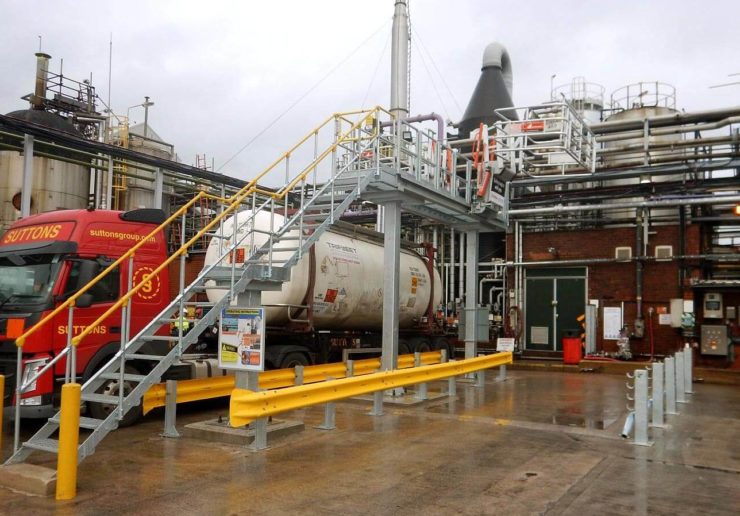
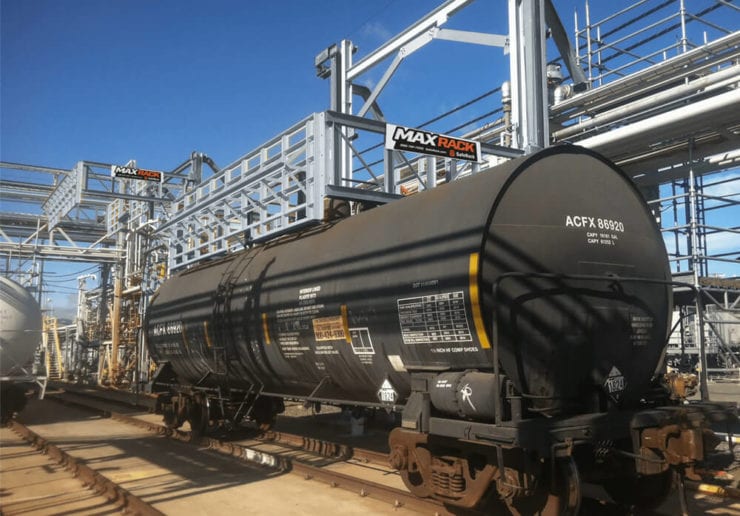
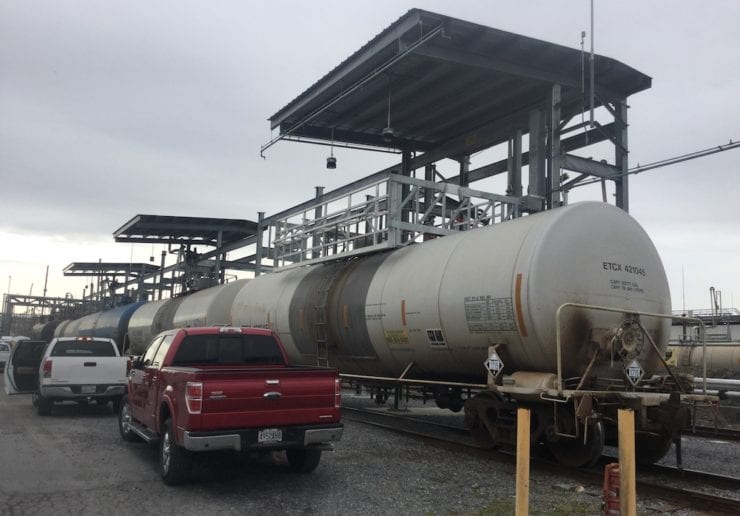

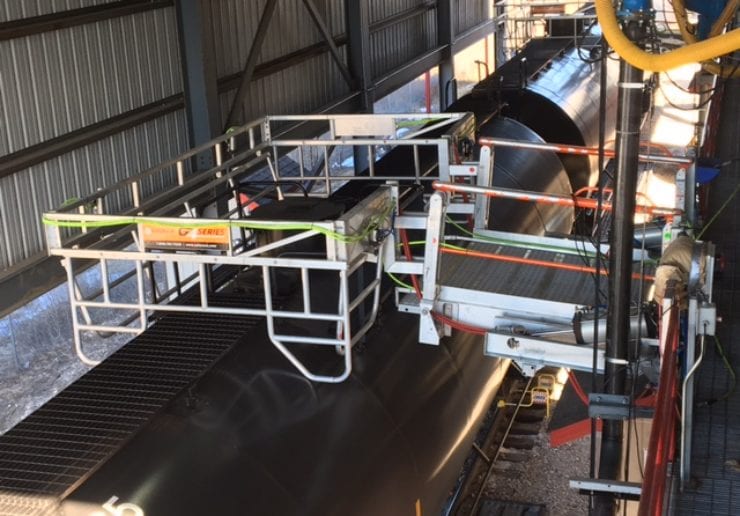
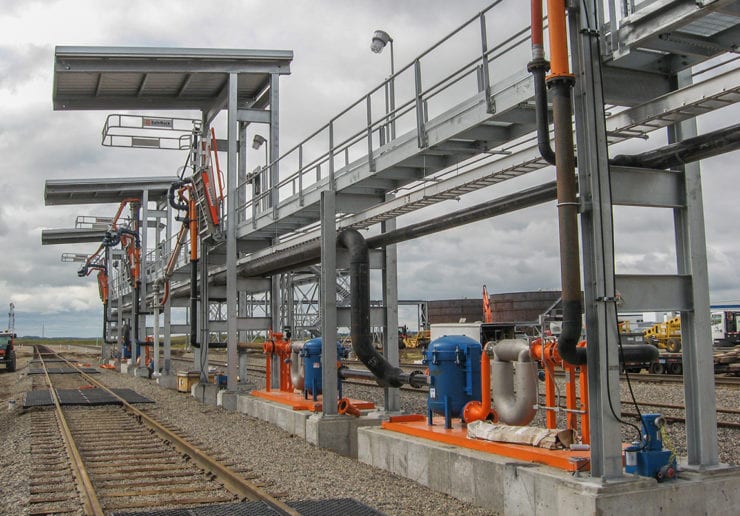
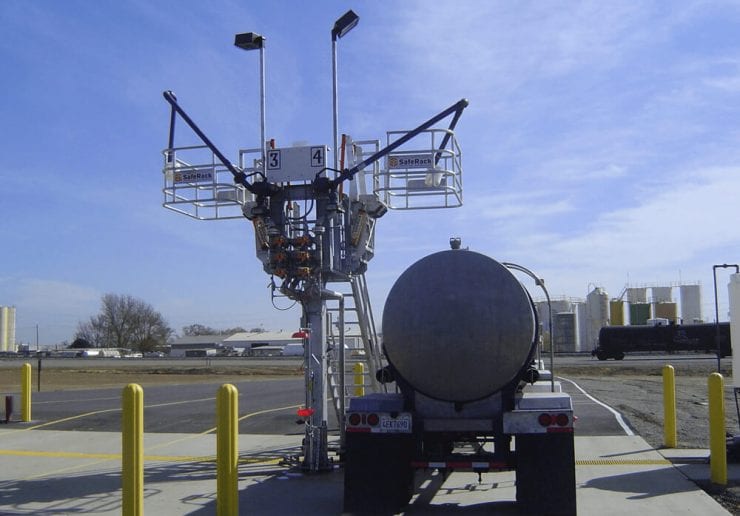
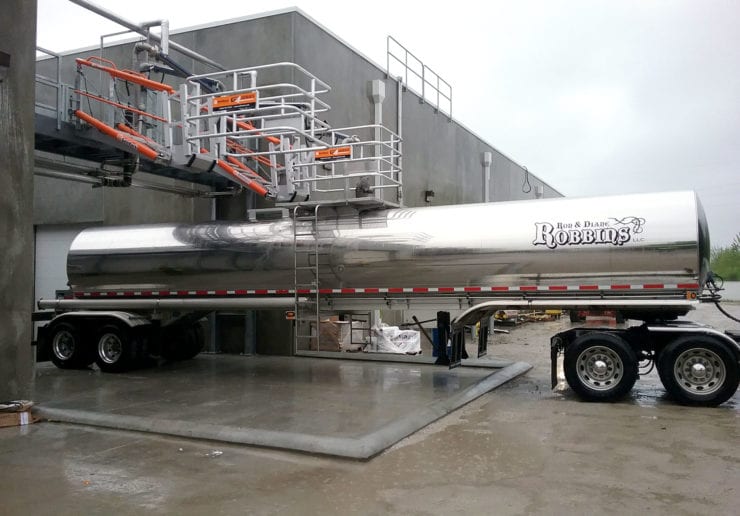
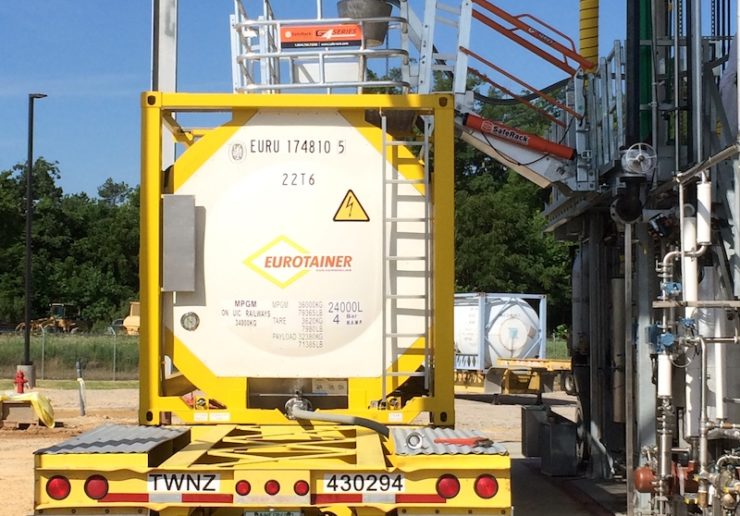
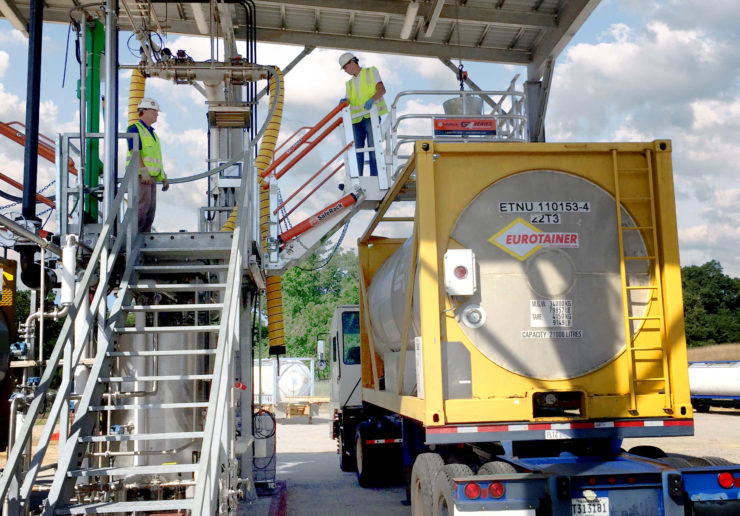




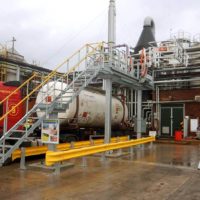
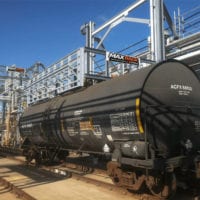
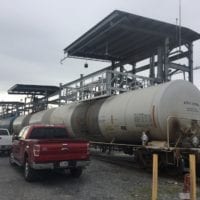

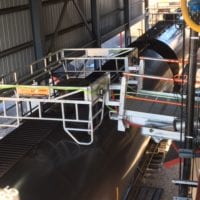
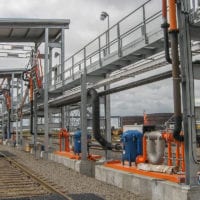
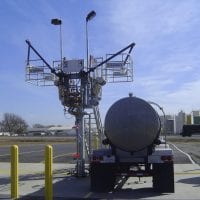
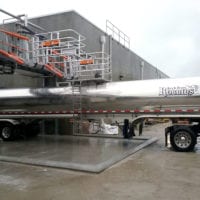
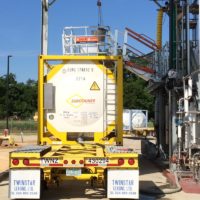
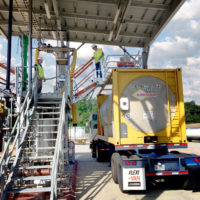



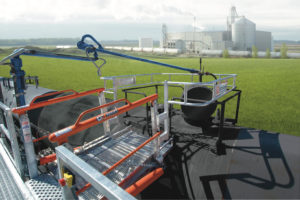
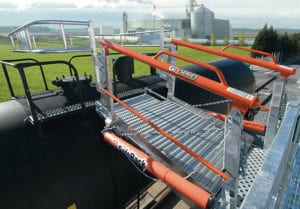
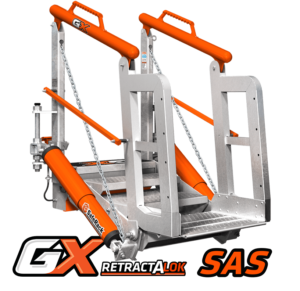
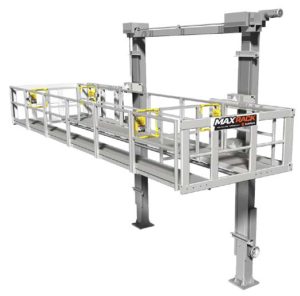 As an alternative to our two and four-rail safety cages, some customers prefer our MAXRack elevating safety cages. The ultimate fall prevention solution engineered to keep operators safe and productive. Designed for both trucks or railcars, and available in multiple cage lengths and widths. Safe, durable, and easy to use. MAXRack is built rock-solid with galvanized steel column supports and lifting arms (cages can be Aluminum, Galvanized, or Stainless Steel depending on application) Available in two power options – Pneumatic Air Drive and Electric Drive (Explosion and Non-Explosion Proof).
As an alternative to our two and four-rail safety cages, some customers prefer our MAXRack elevating safety cages. The ultimate fall prevention solution engineered to keep operators safe and productive. Designed for both trucks or railcars, and available in multiple cage lengths and widths. Safe, durable, and easy to use. MAXRack is built rock-solid with galvanized steel column supports and lifting arms (cages can be Aluminum, Galvanized, or Stainless Steel depending on application) Available in two power options – Pneumatic Air Drive and Electric Drive (Explosion and Non-Explosion Proof).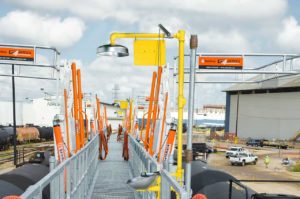

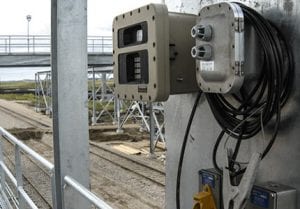
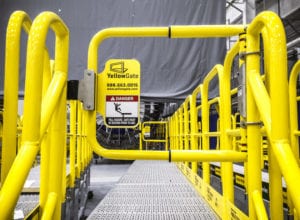
 YellowGate Safety Gates
YellowGate Safety Gates








